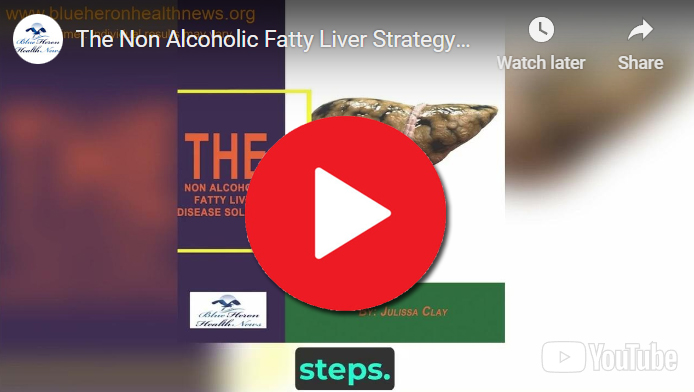
The Non Alcoholic Fatty Liver Strategy™ By Julissa Clay the program discussed in the eBook, Non Alcoholic Fatty Liver Strategy, has been designed to improve the health of your liver just by eliminating the factors and reversing the effects caused by your fatty liver. It has been made an easy-to-follow program by breaking it up into lists of recipes and stepwise instructions. Everyone can use this clinically proven program without any risk. You can claim your money back within 60 days if its results are not appealing to you.
What is the relationship between fatty liver disease and liver cancer?
Fatty liver disease, particularly non-alcoholic fatty liver disease (NAFLD), is associated with an increased risk of developing liver cancer, specifically hepatocellular carcinoma (HCC). This relationship is multifaceted and involves a progression from simple steatosis (fat accumulation in the liver) to more severe liver conditions, including non-alcoholic steatohepatitis (NASH), fibrosis, cirrhosis, and ultimately, liver cancer. Here’s a detailed explanation of the relationship between fatty liver disease and liver cancer:
1. Progression of NAFLD to NASH and Fibrosis
A. Non-Alcoholic Fatty Liver Disease (NAFLD)
- Definition: NAFLD is characterized by the accumulation of fat in liver cells without significant alcohol consumption. It is often associated with obesity, type 2 diabetes, dyslipidemia, and metabolic syndrome.
- Progression Risk: Not all individuals with NAFLD progress to more severe forms, but a subset can develop NASH.
B. Non-Alcoholic Steatohepatitis (NASH)
- Definition: NASH is a more severe form of NAFLD characterized by inflammation and hepatocyte injury, along with fat accumulation. It can lead to fibrosis (scarring) of the liver.
- Inflammation and Damage: The chronic inflammation and liver cell damage in NASH can trigger fibrosis and, over time, progress to cirrhosis. This inflammatory state is a key factor in increasing the risk of liver cancer.
2. Cirrhosis and Increased Cancer Risk
A. Cirrhosis Development
- Definition: Cirrhosis is the advanced scarring of the liver that can result from chronic liver damage. It significantly alters liver architecture and function.
- Cancer Risk: Cirrhosis, regardless of the cause, is a major risk factor for hepatocellular carcinoma (HCC). In the context of NASH-related cirrhosis, chronic inflammation, regenerative nodules, and genetic mutations can create an environment conducive to the development of liver cancer.
B. Chronic Inflammation and Cellular Changes
- Inflammation: Chronic liver inflammation, common in NASH and cirrhosis, promotes DNA damage, oxidative stress, and subsequent mutations in liver cells.
- Regenerative Nodules: As the liver tries to repair damage through regeneration, this increased cellular turnover can lead to errors in DNA replication, increasing the likelihood of malignant transformation.
3. Metabolic Syndrome and Insulin Resistance
A. Role of Metabolic Syndrome
- Components: Metabolic syndrome, which includes obesity, insulin resistance, dyslipidemia, and hypertension, is commonly associated with NAFLD and NASH.
- Impact on Liver Cancer Risk: These metabolic factors contribute to chronic inflammation and oxidative stress, both of which are implicated in the pathogenesis of liver cancer.
B. Insulin Resistance and Hyperinsulinemia
- Insulin Resistance: A common feature in NAFLD, insulin resistance can lead to increased insulin and insulin-like growth factor (IGF) levels.
- Cancer Mechanism: Elevated insulin and IGF levels promote cell proliferation and inhibit apoptosis (programmed cell death), creating conditions that favor cancer development.
4. Oxidative Stress and Genetic Mutations
A. Oxidative Stress
- Sources: Fat accumulation in the liver, particularly when combined with inflammation, leads to increased oxidative stress.
- DNA Damage: Oxidative stress can cause DNA damage, promote mutations, and alter cellular functions, contributing to carcinogenesis.
B. Genetic and Epigenetic Changes
- Mutations: Chronic liver injury in NAFLD and NASH can result in genetic mutations and alterations in gene expression, increasing the risk of cancerous changes.
- Epigenetic Alterations: Changes in DNA methylation and histone modification, often driven by chronic inflammation and metabolic abnormalities, can also contribute to the development of liver cancer.
5. Direct and Indirect Mechanisms of Carcinogenesis
A. Direct Mechanisms
- Cellular Transformation: The chronic injury and repair cycles in the liver can lead to the transformation of normal hepatocytes into malignant cells.
- Immune Response: Chronic liver inflammation can lead to an altered immune response, which may fail to adequately surveil and eliminate emerging cancer cells.
B. Indirect Mechanisms
- Systemic Effects: Factors such as obesity, type 2 diabetes, and hyperlipidemia, often associated with NAFLD, contribute indirectly by promoting systemic inflammation and metabolic disturbances, which can influence liver carcinogenesis.
6. Risk Factors and Prevention
A. Identifying High-Risk Individuals
- Risk Stratification: Not all patients with NAFLD will develop liver cancer. Identifying high-risk individuals (those with advanced fibrosis or cirrhosis, older age, or coexisting diabetes) is crucial for targeted surveillance and prevention.
- Surveillance Programs: Regular screening with imaging and serum biomarkers can help detect liver cancer at an earlier, more treatable stage in high-risk patients.
B. Prevention Strategies
- Lifestyle Modifications: Weight loss, a healthy diet, regular physical activity, and controlling metabolic syndrome components can reduce the progression of NAFLD to NASH and cirrhosis, thus lowering the risk of liver cancer.
- Medical Interventions: Medications to control insulin resistance, dyslipidemia, and hypertension, as well as emerging therapies targeting fibrosis, may help prevent the progression of NAFLD to liver cancer.
The relationship between fatty liver disease and liver cancer is primarily driven by chronic liver inflammation, metabolic abnormalities, and the progression to cirrhosis. Understanding the risk factors and implementing prevention and surveillance strategies are crucial in reducing the burden of liver cancer in individuals with fatty liver disease.

The Non Alcoholic Fatty Liver Strategy™ By Julissa Clay the program discussed in the eBook, Non Alcoholic Fatty Liver Strategy, has been designed to improve the health of your liver just by eliminating the factors and reversing the effects caused by your fatty liver. It has been made an easy-to-follow program by breaking it up into lists of recipes and stepwise instructions. Everyone can use this clinically proven program without any risk. You can claim your money back within 60 days if its results are not appealing to you.